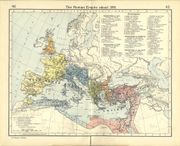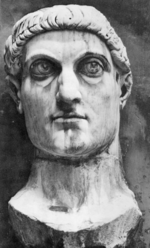Byzantine Empire (Greek: Βασιλεία Ῥωμαίων) is the term conventionally used since the 19th century to describe the Greek-speaking Roman Empire during the Middle Ages, centered at its capital in Constantinople. In certain specific contexts, usually referring to the time before the fall of the Western Roman Empire, it is also often referred to as the Eastern Roman Empire. There is no consensus on the starting date of the Byzantine period. Some place it during the reign of Diocletian (284–305) due to the administrative reforms he introduced, dividing the empire into a pars Orientis and a pars Occidentis. Some consider Constantine the Great its founder. Others place it during the reign of Theodosius I (379–395) and Christendom's victory over Roman religion, or, following his death in 395, with the division of the empire into western and eastern halves. Others place it yet further in 476, when the last western emperor, Romulus Augustus, was forced to abdicate, thus leaving sole imperial authority to the emperor in the Greek East. In any case, the changeover was gradual and by 330, when Constantine inaugurated his new capital, the process of further Hellenization and increasing Christianization was already underway.
Read more at Wikipedia.org



